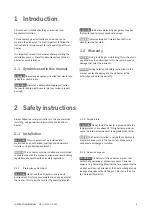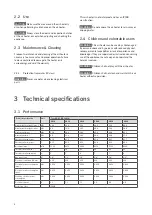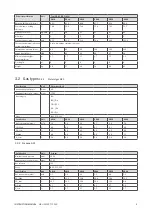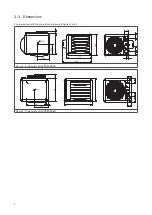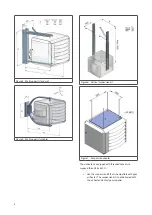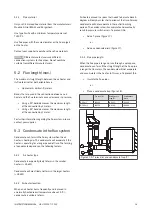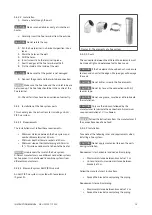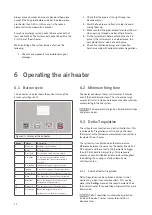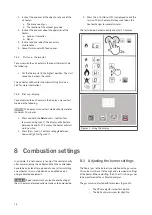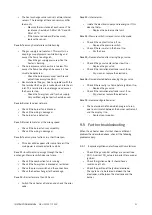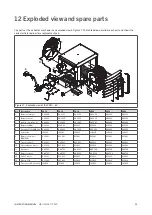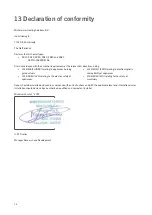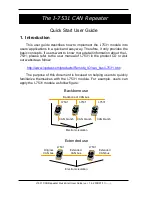
16
Always place a bracket on or near a bend or elbow piece,
except if the flue pipes before and after the elbow piece
are shorter than 0,25 m. In this case, fix the second
element after the elbow with a bracket.
Every flue discharge system needs to be secured with at
least one bracket. The first bracket needs to be within the
first 0,5 m of the air heater.
When installing a flue system inside a shaft, do the
following:
1. Check the components for possible damage or
blockage.
2. Check that the pipe is at the right slope (see
Requirements).
3. Mark the flue pipes and fresh air pipes to avoid
mixing them up.
4. Make sure that the pipes extend for at least 50 mm
when passing through a wall or other obstacle.
5. Fix the last element before entering the shaft in
place. If the last element is an elbow piece, the
next element must also be fixed in place.
6. Check if ventilation openings and inspection
hatches comply with national and local regulations.
6 Operating the air heater
6.1 Burner cycle
The air heater’s display shows the current status of the
burner cycle (figure 20).
Figure 20 - Display of the air heater
Display
Status
Description
0
Stand-by
Waiting for heat demand.
1
Reset
Software reset.
3
Pre-check
Zero position check pressure switch.
4
Pre-purge
30 seconds of pre ventilation by the
combustion fan. The pressure switch is
checked.
5
Pre-ignition
Ignition without opening the gas valve.
6
Ignition
5 seconds of ignition. The gas valve opens.
7
Flame check The air heater checks if the flame is present.
8
Burn
The heater fires up and starts to modulate.
9
Minimum
Before the flame stops, the burner will
modulate to minimum power.
10
Burner off
The gas valve closes. The flame stops.
11
Post purge
Burner fan purges with fresh air.
System fan cools the heat exchanger.
6.2 Minimum firing time
The heater will always fire for a minimum of 4 minutes,
even if the heat demand stops. This is to avoid a large
amount of start and stops and to prevent condensate from
accumulating in the flue system.
NOTICE
The heater will try to ignite 2 times before it stops
and gives an error.
6.3 Delta-T-regulation
The air heater can function as a de-stratification fan. This
is called delta-T regulation and it is done via the room
thermostat, with a temperate measurement sensor that is
located on the air heater.
The system fan is activated when the temperature-
difference between the sensor on the heater (the delta-T
NTC sensor) and the sensor in the thermostat is bigger
than 8
o
C (standard factory setting). This procedure
ensures an even distribution of temperature throughout
the building, thus acting as a fully automatic de-
stratification fan.
6.3.1
Switch off delta-T-regulation
Delta-T regulation can be switched off when it is not
desired (e.g. when it causes discomfort). This can be
done in the
Settings
menu on the room thermostat. See
the user manual of the special Room thermostat for more
information.
NOTICE
Delta-T regulation is automatically switched
off when the delta-T sensor (sensor terminal J6) is
disconnected.


